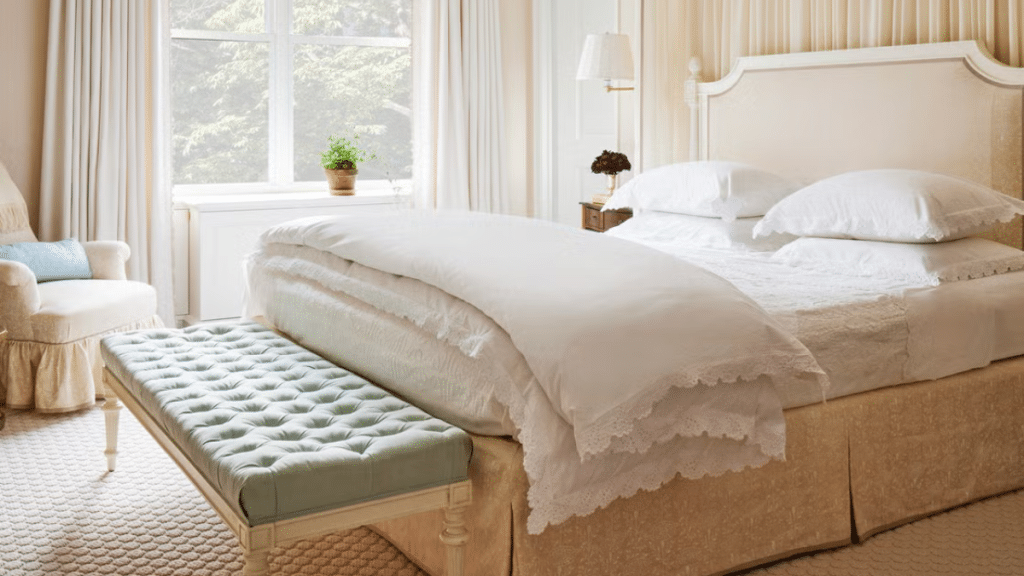With a more trend-conscious era of interior design and the pursuit of eco-friendly living, upholsterers are finally seeing a long-overdue revival of attention. These skilled craftspeople, far too often consigned to working behind the scenes, are the brains and hands behind the chairs we slide into so effortlessly, the sofas on which we gather, and the subtle accents that make a room a house. So what exactly are upholsterers, and why do they mean so much more now than they ever did?
Let us enter the world of upholstery and uncover the characteristic craft, heritage, and evolving significance of these humble comfort and fashion makers.
Who are upholsterers?
Essentially, upholsterers are craftsmen who are experts at outfitting and renovating furniture with padding, springs, webbing, and fabric or leather upholstery. Their work is much broader than draping furniture in cloth. It is a delicate blending of design, engineering, craftsmanship, and even history preservation. They are the individuals who can bring back an antique armchair, make a bench fit into your home’s décor, or restore a centuries-old family antique to its original splendor.
Although the majority regard upholstery as luxury these days, the business began centuries ago in the Middle Ages. The typical upholsterers of the time used to attend royals and nobles by making them plush padded chairs for the mansions and palaces themselves by hand. Although the tools and the material changed with time, the type of work is still hard-wired in tradition.
Handiwork Endures
One of the most interesting aspects of upholstery is the amount of labor that goes into it. Unlike factory-produced furniture, upholstered furniture, especially restored or custom ones, are generally built to last decades, if not centuries. A skilled upholsterer has perfected the art of assessing a frame for sturdiness, hand-re-tying springs, padding layering for optimal comfort, and tailoring fabric with care.
This attention to detail not only gives the furniture longevity but also usability. From creating ergonomic chairs or employing fireproof materials, each decision is intentional. The upholsterer also needs to understand how materials wear with use and weather, how to match a design on fabric, and how to make old furniture conform to today’s comfort standards without sacrificing its personality.
The Sustainable Choice: Repair, Don’t Replace
Today, upholsterers are tasked with making it green. Rather than sending old or outdated furniture to the dump, homeowners are increasingly opting to revive things and re-imagine what they already possess. Not only is this reducing waste in landfills, but it is also preserving the individuality of antique and vintage furniture.
By reusing old frames and components wherever possible, upholsterers are fighting the throwaway culture that has plagued the furniture industry for so long. Indeed, numerous designers and consumers today look for second-hand pieces of furniture exactly because of this: the potential to personalize them through upholstery.
Customization and Personal Expression
Upholsterers also make rooms come alive. They offer the chance to choose fabric, color, texture, and design elements that express a client’s style or personality. From rich velvet in a gemstone color to classic floral motifs or crisp minimalist shapes, choices are endless.
Also, upholsterers can work with interior designers, architects, or private clients to create one-of-a-kind pieces that are specifically tailored to a space—be it a retro-themed café, a modern loft, or a family residence. That level of customization is simply not possible for big box furniture stores.
Upholstery in Commercial and Public Spaces
The skills of upholsterers are by no means confined to the home. They are highly valued in public places—hotel and restaurant bedrooms, theatres, museums. Every booth chair in a fashionable bistro, every velvet-upholstered theatre seat, every padded office reception lobby chair has likely come through the doors of an upholsterer.
These projects require not only design sensitivity but also cognizance of industry-specific regulations, such as fire safety regulation, wear resistance, and accessibility codes. Upholsterers tend to work in close liaison with designers and builders so that form follows function in all environments.
The Challenges and Rewards of the Trade
While upholstery is an extremely rewarding profession, it also has its negative aspects. The labor is physically demanding, with heavy lifting, dainty hand work, and sometimes long hours to meet deadlines. Materials may be costly, and some restoration is research into the past and delicate handling.
But for the hobbyists, the reward is great. There is satisfaction in bringing back a worn, old piece and making it beautiful and functional again. Upholsterers speak of the joy of bringing back a family heirloom or helping a client create the perfect piece that will be the centerpiece in their home.
The Modern-Day Upholsterer: Blending Tradition with Innovation
Today’s upholsterers are far from antiquated. They’re mostly embracing new technologies like digital fabric printing, laser cutting, and computer-aided design (CAD) to make their work easier. Social media platforms Instagram and TikTok have in turn given these craftsmen a platform on which to share their before-and-after makeovers, offer tips, and acquire loyal fans.
Younger generations are also becoming interested in practical, purposeful trades. As a reaction to this, apprenticeships and upholstery schools are becoming more popular, and the craft and heritage are being passed down to a new generation.
